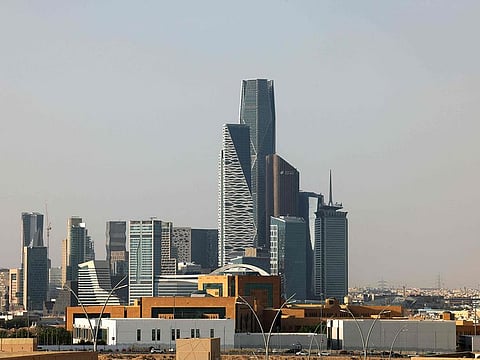Saudi Arabia: Corporate sukuk and debt capital market Growth exceeds SR30 billion since 2019
Corporate sukuk, debt capital market reached SR125b by 2023-end, compared to SR95b in 2019

Riyadh: The Capital Market Authority (CMA) has announcing that the sukuk and debt capital market in Saudi Arabia has achieved an annual growth rate of 7.9 per cent since 2019. This growth has been primarily concentrated in unlisted issuances, which have grown at an annual rate of 9.6 per cent.
The number of issuers has increased alongside the market's growth. The unlisted sukuk and debt capital market has grown by approximately SR33 billion since 2019, reaching approximately SR105 billion in 2023, compared to SR72 billion in 2019.
The Financial Sector Development Program (FSDP) formed the 'Sukuk and Debt Instruments Market Development Committee', chaired by the chairman of CMA, to serve as a sub-committee of the program. The aim is to unify efforts and set strategic directions to develop the sukuk and debt capital market, contributing to the goal of the FSDP to create an advanced capital market, particularly in relation to the sukuk and debt capital market.
The Sukuk and Debt Instruments Market Development Committee has implemented several initiatives since its establishment to deepen and enhance the liquidity of the sukuk and debt capital market.
The size of the corporate sukuk and debt capital market reached SR125 billion by the end of 2023, compared to SR95 billion by the end of 2019. Additionally, the number of companies issuing debt instruments has tripled by the end of 2023 compared to the end of 2019.
In terms of liquidity, the market experienced rapid growth in the value of trades and the number of executed transactions, with a traded value of SR2.5 billion in 2023 compared to SR0.8 billion in 2019.
Regarding the diversity of the investor base in the corporate sukuk and debt capital market, CMA Deputy Assistant of Financing and Investment Fahad Bin Hamdan noted that the share of individual investors rose from about 1 per cent at the end of 2021 to approximately 12.5 per cent by the end of 2023.
The increase was due to the successful completion of a public offering of sukuk in the fourth quarter of 2022, which attracted over 125,000 individual investors.
Bin Hamdan added that the share of banks declined from roughly 60 per cent at the end of 2021 to 48 per cent at the end of 2023. The share of government entities also dropped by 7 per cent, from 20 per cent at the end of 2021 to 13 per cent in 2023. Meanwhile, the share of investment funds increased from about 12 per cent at the end of 2021 to 15 per cent at the end of 2023. The number of executed transactions in the sukuk and debt capital market, both listed and unlisted, rose to 36,961 in 2023, compared to 3,722 in 2021, an increase of 893 per cent.
Regarding the sectors issuing sukuk and debt instruments at the end of 2023, the financial sector emerged as the most active in using the sukuk and debt capital market as a financing channel, aligning with global market trends. It was followed by the energy sector and the public utilities sector.
Bin Hamdan emphasized that the CMA will continue to develop the corporate sukuk and debt capital market in collaboration with the members of the Sukuk and Debt Instruments Market Development Committee and stakeholders.
To measure the performance of the strategic initiatives, CMA will monitor several strategic indicators, including the percentage of the volume of funds collected from the offering of sukuk and debt instruments as a percentage of total public financing, the size of debt instruments as a percentage of GDP, debt instruments turnover, and the percentage of foreign ownership in debt instruments.
Sign up for the Daily Briefing
Get the latest news and updates straight to your inbox



